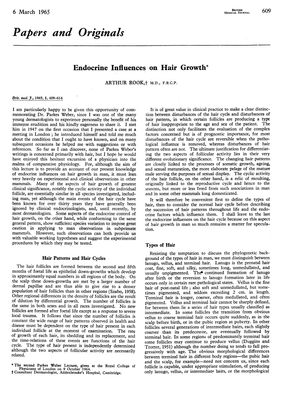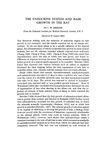Endocrine Influences on Hair Growth
March 1965
in “
The BMJ
”

TLDR Hormones and genetics affect hair growth and patterns, with some changes reversible and others not.
In the 1965 paper, Arthur Rook explored how endocrine factors influence human hair growth, noting that while the number of hair follicles remains constant, the type of hair they produce can change due to genetic and hormonal factors. Rook discussed the transition from vellus to terminal hair, the impact of aging on hair patterns, and the role of hormones such as androgens, growth hormone, and luteotrophin. He observed that about 60% of white men by age 50 show some baldness, and 40% of British women have facial terminal hair. The paper also addressed hair cycle disturbances, which are typically reversible and may be caused by hormonal imbalances, and hair pattern disturbances, which are often related to hormonal or genetic factors and are not fully reversible. Conditions like telogen effluvium and alopecia areata were mentioned, with the latter showing increased incidence in hyperthyroidism and a paradoxical response to corticosteroids. Rook concluded that more research is needed to understand the factors influencing hair follicles in humans.


